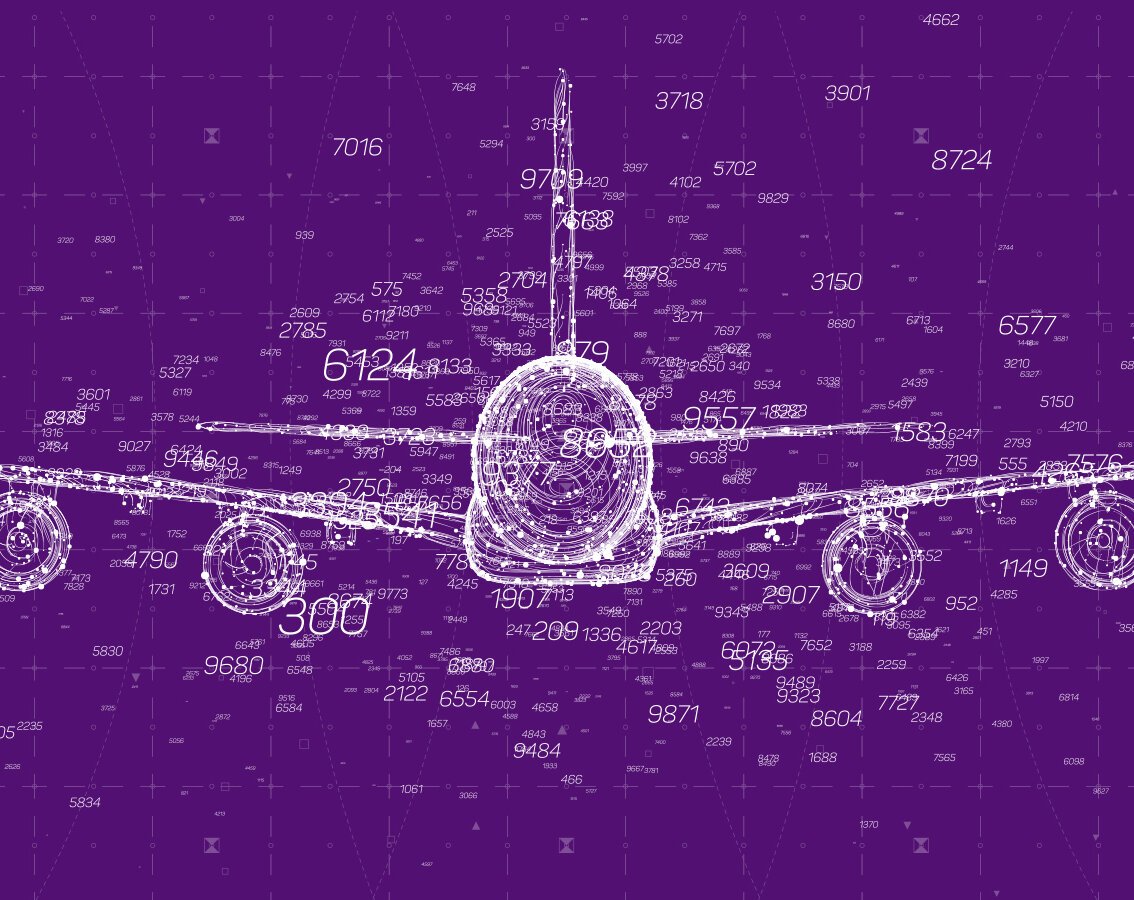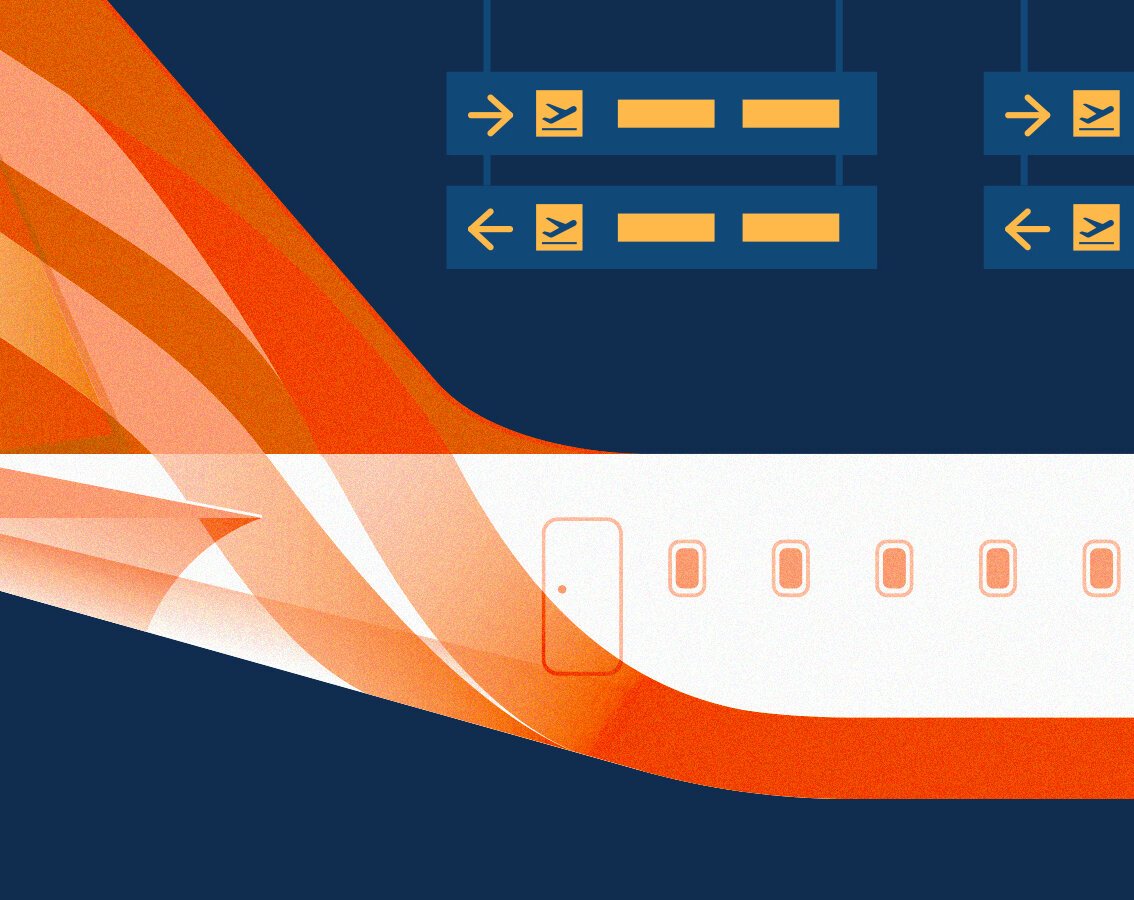blog
Innovating at Altitude: How Automation is Revolutionizing Aviation
By Mohan S AI and ML Airport May 12, 2023

Digital automation is the use of technology to automate and optimize business processes, tasks, and operations. It can free up employees to focus on more complex and value-added tasks, improving overall productivity and customer satisfaction.
Automation is revolutionizing aviation by improving safety, efficiency, and accuracy in operations. It can reduce human errors and increase the reliability of flight systems. Automation can also enable aircraft to operate with greater precision, leading to improved fuel efficiency and cost savings for airlines.
You may like to read: Exploring digital opportunities in Airlines
A majority of passengers, around 68%, will be digital travelers by 2025. These travelers will expect the same level of ease and convenience during their travel as they enjoy in other aspects of their lives.
Use Cases of Digital Automation in Aviation
Technology is the key for the aviation industry to provide high-end services to its next generation of customers who are savvy and expect the best. But currently, the aviation industry is struggling to keep up with a growing demand for air travel, as airlines face staff shortages globally. Let’s try to understand how automation is defining aviation industry processes and has become necessary for its survival.
Flight Operations
Automation helps in streamlining flight operating tasks such as flight planning, weather monitoring, and fuel management. As an example, airlines are using flight planning softwares that uses real-time data to optimize routes and reduce fuel consumption.
1. Automated Flight Planning
Weather and turbulence prediction: Automated flight planning systems predict weather conditions and turbulence along a flight path which allows pilots to adjust and plan their routes accordingly and hence avoid potential hazards.
Fuel efficiency: Digital automation optimizes flight paths and reduces fuel consumption, which leads to cost savings for airlines and reduced emissions.
Maintenance scheduling: Automated flight planning systems schedule maintenance tasks and inspections accordingly to ensure that aircrafts are in good working order. These routine checkups result in less issues and reduces downtime.
Crew scheduling: Automation can schedule crew assignments and rotations,making sure that pilots and other staff are not overworked, properly rested and well prepared for their duties.
Route optimization: Flight planning systems use digital automation to optimize flight routes based on factors such as weather, air traffic congestion, and airport operations, resulting in shorter flight times and improved on-time performance.
2. Automated Cockpit Systems
Autopilot systems: Automated cockpit systems can control the aircraft's flight path, altitude, and speed, allowing pilots to focus on other tasks such as communication with air traffic control and monitoring the aircraft's systems.
Collision avoidance systems: Digital automation can detect and avoid potential collisions with other aircraft or obstacles, reducing the risk of accidents and improving safety.
Engine management systems: Digital automation can be used to monitor and manage the aircraft's engines, ensuring optimal performance and reducing maintenance costs.
Weather radar systems: Automated cockpit systems provide real-time weather radar data, allowing pilots to avoid areas of severe weather and turbulence.
Flight management systems: Automation manages the aircraft's flight plan, including navigation, fuel consumption, and communication with air traffic control.
3. Predictive Maintenance
Sensor-based monitoring: To monitor aircraft components such as engines, brakes, and landing gear. The data collected is analyzed using digital automation to detect potential problems before they become major issues.
Predictive analytics: To analyze large amounts of data from aircraft components, maintenance records, and flight data to predict when maintenance is needed. This helps airlines to avoid unexpected downtime and improve operational efficiency.
Proactive maintenance scheduling: To schedule maintenance tasks proactively, based on data collected from sensors and predictive analytics. This ensures that maintenance is performed at the optimal time, reducing the risk of equipment failure.
Condition-based maintenance: To determine when maintenance is needed based on the actual condition of the aircraft, rather than on a fixed schedule. This approach improves safety, reduces maintenance costs, and minimizes downtime.
Fault diagnosis: To diagnose faults in aircraft components, helping maintenance crews to quickly identify and address problems.
Airport Operations
Digitalizing airport operations is a crucial component for aviation. They play a significant role in ensuring and maintaining the safety and convenience in air travel. From maintaining runways, taxiways, and terminal facilities, as well as providing essential services such as air traffic control, baggage handling, and security screening. Airport operations need to function smoothly, as effective management is critical to the success of air travel.
1. Baggage Handling Systems
Baggage tracking: Automated baggage handling systems use digital automation to track luggage throughout the airport, ensuring that bags are properly sorted and delivered to the correct destination. This helps to reduce the risk of lost luggage and improve the passenger experience.
Baggage sorting: Automation is used to sort bags based on their destination and flight, ensuring that they are loaded onto the correct aircraft.
Baggage screening: Automation systems can screen bags for potential security threats, reducing the need for manual inspection and improving airport security.
Baggage loading: Automated baggage handling systems are used to load bags onto aircraft, ensuring that they are loaded in the correct order and location.
2. Automated Check-in Systems
Self-Service Kiosks: Self-service kiosks allow passengers to check-in for their flight, print their boarding pass, and even check their baggage without the need for human assistance.
Mobile Check-in: Digital automation is used in mobile check-in systems, allowing passengers to check-in using their mobile device. Passengers can access their boarding pass, update their personal information, and even select their seat using their mobile device.
Biometric Check-in: Automation has introduced biometric check-in systems, allowing passengers to check-in using facial recognition or fingerprint scanning.
3. Security Screening Systems
Automated screening lanes: Automated screening lanes use digital automation to speed up the security screening process by allowing multiple passengers to simultaneously place their items in trays and pass through the scanner.
Advanced imaging technology: Automated security screening systems can scan passengers and their belongings using advanced imaging technology, allowing security personnel to detect potential security threats while reducing the need for manual inspection.
Biometric identification: Passengers are enabled through automation to identify themselves using biometric technologies such as facial recognition or fingerprint scanning. Saving important time.
Automated passport control: Automated security screening systems use digital automation to verify passengers' passports and travel documents.
4. Ground Support Equipment Automation
Autonomous baggage tugs: Automated baggage tugs move luggage between the aircraft and baggage handling systems without the need for manual intervention, reducing the risk of accidents and improving efficiency.
Automated refueling systems: Automated refueling systems use digital automation to refuel aircraft without the need for manual intervention, reducing the risk of fuel spills and improving efficiency.
Remote monitoring: Digital automation can remotely monitor GSE equipment, allowing for early detection of potential issues and improving maintenance schedules, which can lead to increased equipment availability and reduced downtime.
Ground handling automation: Automated ground handling systems can manage the movement of aircraft, equipment, and personnel on the tarmac, improving safety and efficiency.
Air Traffic Control
Air traffic control is the service that ensures the safe and efficient movement of aircraft in the airspace and on the ground as well. The primary goal of air traffic control is to provide a safe and orderly flow of air traffic. In addition to safety, air traffic control also plays a critical role in reducing flight delays, improving efficiency, and minimizing fuel consumption.
1. Automated Communication Systems
Voice recognition systems: Automated communication systems recognize and respond to voice commands, reducing the need for manual communication and improving efficiency.
Automated weather updates: Automated communication systems provide pilots with real-time weather updates, reducing the risk of weather-related incidents and improving flight safety.
Digital flight planning: Automated communication systems create flight plans and communicate them to pilots, reducing the risk of errors and improving efficiency.
Automated flight tracking: Automated communication systems can track the location and status of flights in real-time, providing pilots and ground personnel with up-to-date information and improving communication and coordination.
Automated air traffic control: Automated communication systems support air traffic control operations, improving communication and reducing the risk of errors.
2. Digital Air Traffic Management
Digital flight planning: Automated flight planning systems create optimized flight routes, reducing flight time and fuel consumption.
Predictive analytics: Digital automation is used to analyze data from various sources, such as weather reports and flight plans, to predict potential disruptions and adjust flight plans accordingly, improving flight safety and efficiency.
Collaborative decision-making: Automated systems facilitate collaboration between air traffic controllers, pilots, and ground personnel, improving communication and reducing the risk of errors.
Automated airspace management: Digital automation helps manage airspace, including route planning and air traffic flow management, improving efficiency and reducing delays.
Remote tower operations: Automated systems enable air traffic control towers to be operated remotely, reducing the need for physical towers and improving efficiency.
3. Weather Monitoring and Prediction Systems
Automated weather data collection: Digital automation helps collect weather data from various sources, including satellite imagery, weather balloons, and ground-based sensors, providing accurate and timely information for pilots and air traffic controllers.
Machine learning and predictive analytics: Automation is used to analyze large amounts of weather data using machine learning and predictive analytics algorithms, allowing for more accurate and timely weather forecasts.
Automated decision-making: Digital automation can make decisions based on weather data and forecasts, such as adjusting flight paths or delaying flights, improving safety and efficiency.
Automated weather alerting systems: Digital automation provides real-time weather alerts to pilots and air traffic controllers, improving situational awareness and reducing the risk of weather-related incidents.
4. Collaborative Decision Making
Automated data sharing: Automation automatically shares data between different stakeholders, such as airlines, airports, and air traffic control (ATC) centers. This enables stakeholders to make better decisions based on up-to-date information.
Predictive analytics: Digital automation helps analyze large amounts of data from various sources, such as weather reports, flight schedules, and airport operations data.
Decision support systems: An airport decision support system can recommend which gates to use for incoming flights based on current conditions for an example.
Automated communication systems: To automate communication between stakeholders, reducing the risk of miscommunication and improving the efficiency of decision-making.
Passenger Experience
Passenger experience can greatly impact customer satisfaction, loyalty, and ultimately, the success of airlines and airports. A positive passenger experience can lead to repeat business and positive word-of-mouth. By prioritizing passenger experience, airlines and airports can build a positive brand image, increase customer loyalty, and ultimately drive growth and profitability.
1. Mobile Check-in and Boarding
Mobile check-in: Passengers can use their smartphones to check-in for their flights, eliminating the need to stand in long lines at the airport. This improves efficiency and reduces wait times, improving the passenger experience.
Mobile boarding passes: Passengers can digitally access their boarding pass, eliminating the need for printed boarding passes. This not only reduces paper waste but also makes the boarding process faster and more efficient.
2. In-flight Entertainment Systems
Personalized content: In-flight entertainment systems use digital automation to personalize content based on a passenger's preferences, viewing history, and other data. This can include movies, TV shows, music, and other content.
Automated advertising: In-flight entertainment systems display targeted advertising to passengers. This can include ads for products and services related to the passenger's travel itinerary, demographics, and other factors.
Interactive features: In-flight entertainment systems offer interactive features such as games, trivia, and other activities. These features can be customized to the airline's brand and enhance the passenger experience.
3. Digital Assistance Systems
Baggage tracking: Digital assistance systems can track and monitor passenger baggage throughout their journey. This can include real-time updates on baggage location, status, and delivery.
Flight information: Digital assistance systems can provide passengers with up-to-date flight information, including gate changes, delays, and cancellations.
Language translation: Digital assistance can provide language translation services for passengers, allowing them to communicate with airline staff in their preferred language.
Automated customer service: Digital assistance systems can provide automated customer service, such as answering frequently asked questions, resolving common issues, and even processing refunds or flight changes.
4. Personalized Travel Experiences
Pre-flight services: Digital automation is used to offer pre-flight services, such as personalized meal and drink selections, customized seat options, and other amenities based on a passenger's preferences.
Loyalty programs: Airlines use digital automation to track passenger loyalty and offer personalized rewards, such as upgrades, lounge access, and other benefits based on a passenger's travel history and preferences.
Real-time notifications: Airlines can offer real-time notifications about flight changes, gate updates, and other information relevant to a passenger's itinerary.
Post-flight services: Airlines can offer services, such as personalized recommendations for activities, restaurants, and other attractions based on a passenger's travel history and preferences.
Conclusion
Digital automation is a revolution for the aviation industry. It has been providing huge benefits such as improved safety, increased efficiency, and reduced costs. From automated communication systems and mobile check-in to predictive maintenance and ground support equipment automation, digital automation is transforming almost every aspect of aviation.
Digital automation is a game-changer for the aviation industry, providing significant ease and advantages for passengers, airlines, and airports alike. The impact it has will continue to transform the aviation industry for years and years to come.
Expectations from the aviation industry continue to grow. It has become crucial for airports to future-proof their processes. Digital automation has not only helped in enhancing the security measures, it also saves a lot of manual labor which lowers the airfare for customers. Efficiency is the key in the aviation industry and Digital automation is supposedly the metal used to forge it.



